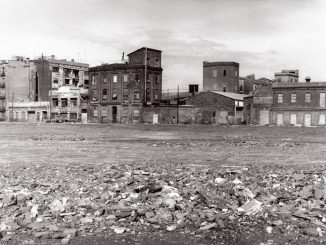
urban change

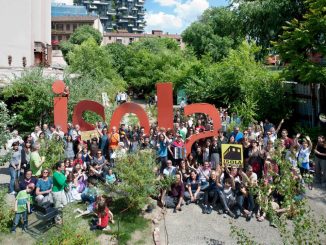
Same old story in Milan: The destruction of Isola
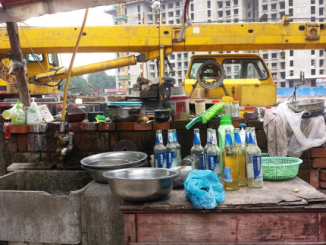
Life in the ruins of old Nanjing
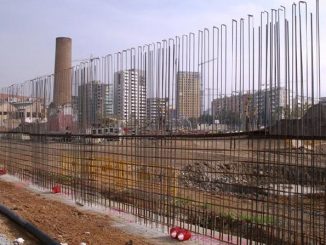
The discreet urbanism of the bourgeoisie
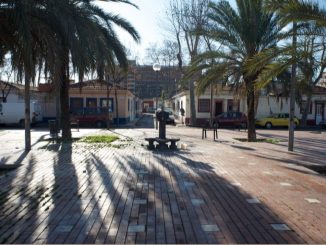
Horizontal anthropology in the margins of Barcelona
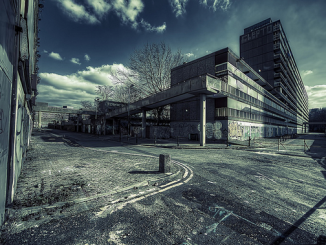
Heygate Was Home!

The ghosts of San Berillo
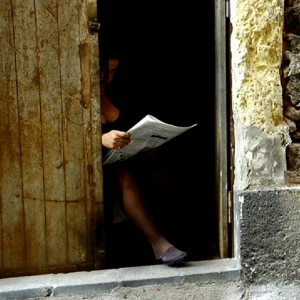 Different cities follow one another on the same site and under the same name, writes Italo Calvino, born and dying without knowing one another, without communication among themselves. At time even the names of the inhabitants remain the same, and their voices’ accent, and also the features of the faces; but the gods who live beneath names and above places have gone off without a word and outsiders have settled in their place. It is pointless to ask whether the new gods are better or worse than the old, since there is no connection between them… We recommend you another Italian documentary movie: Edoardo Morabito and Irma Vecchio’s I fantasmi di San Berillo (2013), first prize at Torino Film Festival. The demolition of this old neighbourhood in the centre of Catania (Sicily), in 1958, was the biggest urban evisceration in post-war Italy, linked (as everything in the country) with Vatican’s Società Generale Immobiliare: 30.000 people where displaced towards the peripheries. It was the same year in which brothels were banned: prostitutes were forced to work underground, and what was left of San Berillo turned into one of the biggest “red light districts” of the Mediterranean. So the story of the neighbourhood went on for another half century, until 2001, when a new police operation evicted again prostitutes and transvestites from their houses and streets. Today many plots are still unoccupied, and some became new favelas (see this 2012 video). The documentary shifts visually from past to present, and the images are associated with the fascinating words of writer Goliarda Sapienza, born in San Berillo in 1924.
Different cities follow one another on the same site and under the same name, writes Italo Calvino, born and dying without knowing one another, without communication among themselves. At time even the names of the inhabitants remain the same, and their voices’ accent, and also the features of the faces; but the gods who live beneath names and above places have gone off without a word and outsiders have settled in their place. It is pointless to ask whether the new gods are better or worse than the old, since there is no connection between them… We recommend you another Italian documentary movie: Edoardo Morabito and Irma Vecchio’s I fantasmi di San Berillo (2013), first prize at Torino Film Festival. The demolition of this old neighbourhood in the centre of Catania (Sicily), in 1958, was the biggest urban evisceration in post-war Italy, linked (as everything in the country) with Vatican’s Società Generale Immobiliare: 30.000 people where displaced towards the peripheries. It was the same year in which brothels were banned: prostitutes were forced to work underground, and what was left of San Berillo turned into one of the biggest “red light districts” of the Mediterranean. So the story of the neighbourhood went on for another half century, until 2001, when a new police operation evicted again prostitutes and transvestites from their houses and streets. Today many plots are still unoccupied, and some became new favelas (see this 2012 video). The documentary shifts visually from past to present, and the images are associated with the fascinating words of writer Goliarda Sapienza, born in San Berillo in 1924.
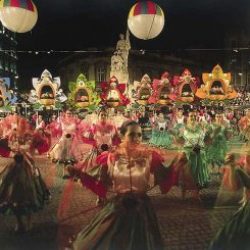
Two cities in the same Lisbon

WHOSE megaevents?
Who were London 2012 Olympic Games for? Were they for the athletes, the sponsors, the organizers, the global audience? Or were they for us? Our friend Gynna Millan (from UCL Development Planning Unit; in 2009 she presented a proposal for Repensar Bonpastor competition), together with a group of video enthusiasts, studied the impact of the “greatest event on earth” on public spaces, parks and local communities in London. The result is a video archive available on Whose Olympics? website, and a short documentary [watch trailer]. Two years later, we can ask again: who will Brasil’s 2014 World Cup be for? “The world cup is not ours“, write these architects from Río Grande do Sur, quoting Plato. These megaevents are transnational, as the protests they elicit. But the discourse of globalization, that transforms any local event in just another chapter of the same story, it’s not our own either. As we discussed in a recent OACU meeting in Barcelona (where, obviously, we have the precedent of 1992’s Olympics), we are much more interested in differences than in similarities. Anthropology has to keep an eye on correspondences and interrelation on the “macro” level, but it explores mainly the local articulations, what is unmeasurably “micro”: all that can’t be compared, all that is specific to each story, place, events, and to the impact of each phenomenon on every particular territory.
- “Whose world cup?“, campaign of the Comités populars da copa (Ancop), and video “Who wins with this game?”, on the Observatório das metrópoles website. “Is the world cup ours?“, Jessica D’Elias study about evictions in Itaquera (Sao Paulo), on Rachel Rolnik blog :: “A Caminho da Copa“, videodocumental, 2012.
- Luís Edoardo SOAREZ, brazilian anthropologist: “What I know and what I don’t know about the protests in Brazil“ [in italian in NapoliMonitor] :: Raúl Zibechi, Uruguayan journalist: “Why is the World Cup indignant“, LaVaca.com
- Big sport events and human rights violations in Brazil: article by Fabiola Ortiz on PeriodismoHumano.com, and interview with Sonia Fleury on Brasildefato, about the Dossier prepared by the Comités popular da copa [PDF] :: Article and videointerview with the economist and sociologist Carlos Vainer, about conflicts related with big events. Note the reference to the transformation of Barcelona.
- Mauro Castro COMA (2012) “From the Olympic dream to the Porto Maravilha project: ‘eventism’ as a catalyzer for regeneration”. Urbe, v.3, n.2. [PDF] :: Magrinyà and Maza (2005) “Tinglados de Bar-ce-lo-na: la incorporación del puerto”, Scripta Nova, 139 [link] :: and don’t miss this jewel: “Barcelona Brasil group: Bcn is our inspiration and Maragall my idol“.
- Letizia GIANNELLA, Brazilian geographer in Barcelona: Some thoughts about the protests (2013) on Manuel Delgado’s blog.
- An article by Nazaret Castro about the World Cup and the Olympic Games in Río, in Intensificant vides nervioses blog (very much related to ours)

Homegrown cities: THIS is sustainable development!
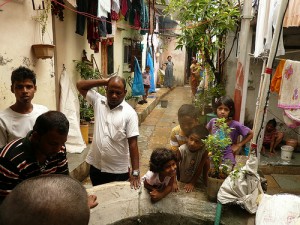 The activists of URBZ collective (of which we wrote in a previous post) are promoting a crowdfunding campaign to develop a plot of land in the neighbourhood of Bhandup in the northwestern suburbs of Mumbai. Their intention is to build there an affordable house, compatible with local construction styles: “homegrown“, and produced in collaboration with local constructors. The house will be sold at reasonable conditions to residents, thus providing the funds for a new project. The idea is to contribute to develop better life conditions for the residents of the so-called “slums”, without depending on international aid or having to rely on NGOs. This homegrown development works against the logic of the big eviction and relocation projects promoted by the state: as happened too often, these top-down projects end up eradicating the population and forcing them into vertical housing blocks, which represent the degree zero of architectural, urban and social thinking, and have been responsible for countless man-made urban disasters in poor and rich countries alike.
The activists of URBZ collective (of which we wrote in a previous post) are promoting a crowdfunding campaign to develop a plot of land in the neighbourhood of Bhandup in the northwestern suburbs of Mumbai. Their intention is to build there an affordable house, compatible with local construction styles: “homegrown“, and produced in collaboration with local constructors. The house will be sold at reasonable conditions to residents, thus providing the funds for a new project. The idea is to contribute to develop better life conditions for the residents of the so-called “slums”, without depending on international aid or having to rely on NGOs. This homegrown development works against the logic of the big eviction and relocation projects promoted by the state: as happened too often, these top-down projects end up eradicating the population and forcing them into vertical housing blocks, which represent the degree zero of architectural, urban and social thinking, and have been responsible for countless man-made urban disasters in poor and rich countries alike.
- Homegrown cities project en Urbz.net
- Join Homegrown cities crowdfunding on indiegogo
- Airoots/Eirut, Matias Echanove and Raoul Srivastava‘s blog
- Interview with Amar Mirjankar, a local contractor the activists are working with [video].
- Documentación sobre la forma local de construir viviendas baratas: video, y artículo “The 2,5 lakh rupee house” en Urbz.net
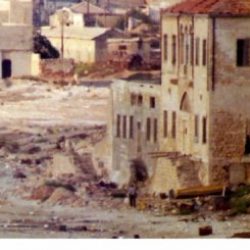
Wastelands: Weizman on military urbanism

A photographic and critical “gentrificatour” in Madrid’s Malasaña neighborhood
On february 9th, 2013, Todo por la praxis (TXP), a group from Madrid, organized the first of its programmed critic and photographic walks focused in the process of gentrification which is happening in Madrid’s city centre, specifically in the historic neighborhoods of Malasaña y Chueca. An enterprise of real estate developers, in need for new investments in an era of financial cuts and economic contraction, with support from the City Council, promoted a “programmed gentrification” of the area, which has been renamed Triángulo Ballesta (TriBall). The new triBall brand inspires from NYC’s business zones like SoHo and Tribeca, in an attempt to replace and erase the identity of this popular area of the city. “Gentrificatour intends to generate an archive of pictures of posters, labels and luminous of the commercial and productive activities that existed in the neighborhood before their replacement. […] The intention is to build a time-capsule that will allow us to evaluate the effects of a process of gentrification, and, in this way, to make them more visible” we read in TXP’s website. Victoria Herranz, photographer and anthropologist from Madrid, part of the group, explains: “Does Malasaña exist? Maybe; or maybe it exists in a different way. […] The line that divides the rehabilitation of a neighborhood from its destruction is too thin. When a process of rehabilitation limits the options of the neighbors to the point in which families have to leave the neighborhood, maybe something is going wrong”.
- Todo por la Praxis – webpage
- Anti-triball: critique, actions, reflections, images of the campaign organized by Agip-Pro collective from Patio Maravillas social center in Madrid. [WEBPAGE]
- “Gentrificatourtriball” on Paisaje transversal: negociación urbana para la transformación colectiva blog.
- Photo gallery: images taken during the last Gentrificatourtriball

“Re-cordar” Can Ricart: to pass it back through the heart
 el desahucio
"bueno,
en primer lugar, te sientes echado, no querido, violentado. se rompe de pronto el universo ese repetitivo e invariable y, sin avisar, todo zozobra,
nada parece real.
incluso los cambios en el barrio,
los derribos,
no tienen ninguna connotación positiva, sólo resultaban amenazadores,
tristes.
trasladar una empresa es complicado.
es decir,
debería serlo, pq una empresa, por encima de todo,
la forman personas.
eso quiere decir q se trastorna –de pronto- toda la cosmogonía de tooodos los integrantes...
el desahucio
"bueno,
en primer lugar, te sientes echado, no querido, violentado. se rompe de pronto el universo ese repetitivo e invariable y, sin avisar, todo zozobra,
nada parece real.
incluso los cambios en el barrio,
los derribos,
no tienen ninguna connotación positiva, sólo resultaban amenazadores,
tristes.
trasladar una empresa es complicado.
es decir,
debería serlo, pq una empresa, por encima de todo,
la forman personas.
eso quiere decir q se trastorna –de pronto- toda la cosmogonía de tooodos los integrantes... 
Urban Typhoon: User-generated cities in Mumbai
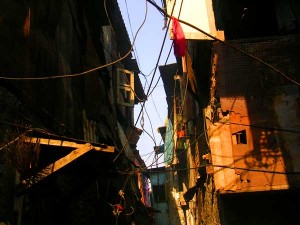 Who is not frightened by the idea of the unstoppable growth of cities in Asia and in the former "third world", or by the perspective (apocalyptical, though critically framed) of moving towards a planet of slums? But in the places closer to this phenomenon - for example in the popular neighborhoods of Mumbai, India - the idea of slum has been criticized since many decades. These urban zones that don't even deserve being called neighborhoods, always presented towards the exterior as marked by lacks (of hygiene, of safety, of integration, of control, even of morality), under a deeper scrutiny reveal histories and dynamics complex and functional, that had been interpreted in various forms according to the different theories. Based in an office in Dharavi-Koliwada (the enormous neighborhood popularized by Slumdog millionaire), the two urban activists Matias ECHANOVE and Rahul SRIVASTAVA (from Urbz collective) show how a series of spontaneous social structures, internal to the so-called slums, cause a constant improvement and development, often obstructed by local authorities or by urban reform plans. In territories as thick and reticular as forests of mangroves, the only valid ways to development are those generated by their very users: homegrown, as the neighborhoods themselves.
Who is not frightened by the idea of the unstoppable growth of cities in Asia and in the former "third world", or by the perspective (apocalyptical, though critically framed) of moving towards a planet of slums? But in the places closer to this phenomenon - for example in the popular neighborhoods of Mumbai, India - the idea of slum has been criticized since many decades. These urban zones that don't even deserve being called neighborhoods, always presented towards the exterior as marked by lacks (of hygiene, of safety, of integration, of control, even of morality), under a deeper scrutiny reveal histories and dynamics complex and functional, that had been interpreted in various forms according to the different theories. Based in an office in Dharavi-Koliwada (the enormous neighborhood popularized by Slumdog millionaire), the two urban activists Matias ECHANOVE and Rahul SRIVASTAVA (from Urbz collective) show how a series of spontaneous social structures, internal to the so-called slums, cause a constant improvement and development, often obstructed by local authorities or by urban reform plans. In territories as thick and reticular as forests of mangroves, the only valid ways to development are those generated by their very users: homegrown, as the neighborhoods themselves. 
Recipes for interculturality from Bilbao
 Arroces del Mundo, Munduko Arrozak, is a popular fiesta being held since 2004 in San Francisco neighborhood, Bilbao (Basque country) . This barrio, apart from the center for the estuary and the railway, is four times more populated than the rest of the city; it has always been stigmatized as a ghetto, related with prostitution, considered a marginal part of the city where the immigrant live, and recently is becoming to be partially gentrified. The fiesta is the result of a patient networking that the Coordinadora de Grupos de Bilbao la Vieja, San Fraencisco y Zabala had been doing for years: this organization was born to influence in the Renewal Plan designed by the City Council, and is made of groups and individuals who had already done projects of social communication in the neighborhood. The idea of the fiesta serves both to denounce the abandon of the neighborhood, and to aim at the construction of intercultural relationships through autonomy and self-organization: the organizers of the event stress that as many people are involved, as less conflicts and incidents ocurr - with the practice, this undermines the securitarian discourse used by the authorities to increase police presence in San Francisco neighborhood.
Arroces del Mundo, Munduko Arrozak, is a popular fiesta being held since 2004 in San Francisco neighborhood, Bilbao (Basque country) . This barrio, apart from the center for the estuary and the railway, is four times more populated than the rest of the city; it has always been stigmatized as a ghetto, related with prostitution, considered a marginal part of the city where the immigrant live, and recently is becoming to be partially gentrified. The fiesta is the result of a patient networking that the Coordinadora de Grupos de Bilbao la Vieja, San Fraencisco y Zabala had been doing for years: this organization was born to influence in the Renewal Plan designed by the City Council, and is made of groups and individuals who had already done projects of social communication in the neighborhood. The idea of the fiesta serves both to denounce the abandon of the neighborhood, and to aim at the construction of intercultural relationships through autonomy and self-organization: the organizers of the event stress that as many people are involved, as less conflicts and incidents ocurr - with the practice, this undermines the securitarian discourse used by the authorities to increase police presence in San Francisco neighborhood.